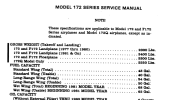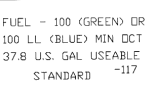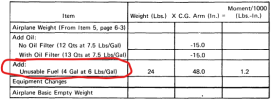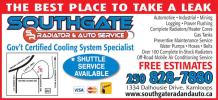robertb
Pre-Flight
Hello,
I have a Cessna 182P and a question regarding fuel capacity placards. I am not able to locate the original placard info in the POH. The specifications in the POH show 79 usable and 84 total gallons of fuel. The current placard by the fuel cap shows "Capacity 39 Gallons" and there are two tanks. These were painted on during a repaint a long, long time ago. I am going to be using the plane for a checkride soon and need to have my mechanic put on new stickers to make sure everything is legible. After some research, I am still at a loss and know there is infinite wisdom here. So, what says you all?
Answers are great but backing it up with a CFR reference would be cool too.
Thanks in advance!
I have a Cessna 182P and a question regarding fuel capacity placards. I am not able to locate the original placard info in the POH. The specifications in the POH show 79 usable and 84 total gallons of fuel. The current placard by the fuel cap shows "Capacity 39 Gallons" and there are two tanks. These were painted on during a repaint a long, long time ago. I am going to be using the plane for a checkride soon and need to have my mechanic put on new stickers to make sure everything is legible. After some research, I am still at a loss and know there is infinite wisdom here. So, what says you all?
Answers are great but backing it up with a CFR reference would be cool too.
Thanks in advance!








